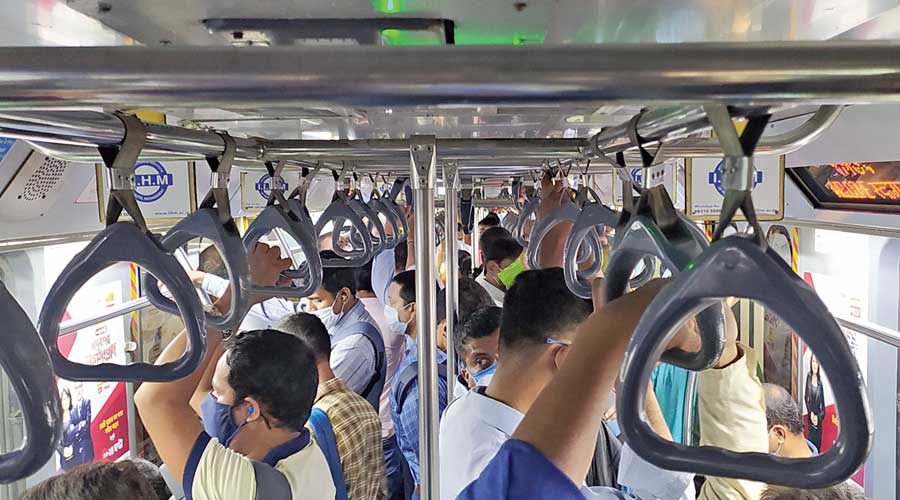A “fracture” in one of the tracks meant for New Garia-bound trains disrupted Metro services for close to three hours in the north-south section on Thursday morning, tormenting rush hour passengers.
A spot on a track between Belgachhia and Shyambazar stations developed the crack, said Metro officials. The spot was inside the tunnel and a driver of a train noticed it minutes after 8am.
“As a precautionary measure, train services were suspended between Dum Dum and Girish Park from 8.14am. Services on the stretch resumed at 11.06am,” said a Metro spokesperson.
“During this period, truncated services ran between Dakshineswar and Dum Dum in the north and between Girish Park and Kavi Subhas (New Garia) in the south.”
Dum Dum and Girish Park in north Kolkata have provisions for trains to change directions.
The disruption troubled office-goers, and students and parents on the first day of the reopening of educational institutions.
Many people headed to Kolkata from the northern suburbs were stuck.
“I got down at Dum Dum and tried to book an app cab. The fare was too high. I boarded an Esplanade-bound bus,” said Saswata Dhara, who lives in Belur in Howrah and works at an office near Poddar Court in central Kolkata.
While disruptions are not new in Metro, they are usually attributed to technical glitches, like problems in third rail power supply, or suicide attempts.
The crack in the track was attributed to temperature fluctuations.
“Prima facie, it seems variations in temperature led to the crack. A detailed report is awaited,” said an official.
Cracks in open railway lines are not uncommon. Metals expand because of heat and contract in cold. But the underground tracks are not as exposed as open lines.
Railway engineers said cracks in the underground railway lines are not “extremely unusual”.
“There is a temperature gradient along the line. The track heats up when a train passes. It then cools down. The temperature fluctuation may not be to the extent seen in open lines but it will be there,” said an engineer.
